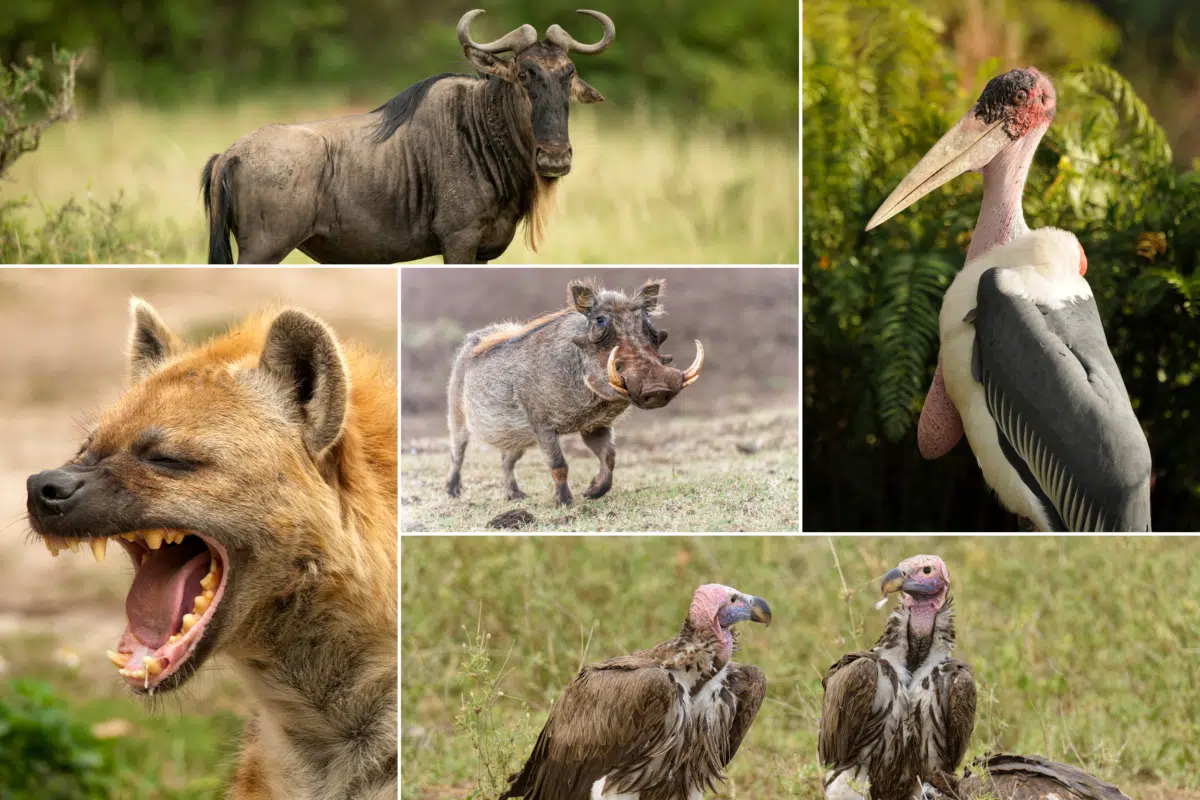You may have heard about seeing the ‘Big Five’ in Africa, but have you heard about the ‘Ugly Five’. This article will introduce the lesser known, yet still exciting to spot, ‘Ugly Five’ in Africa. Whilst this list is always up for debate, for now, this is the ‘Ugly Five.’
Who are the ‘Ugly Five’?
The ‘Ugly Five’ comprise of three scavengers and two vegetarians in the African wild. Whilst they might not appear vastly ugly to me, they all appear to have a slightly awkward appearance and are less regal than their better-known counterpart, ‘The Big Five’. The ‘Ugly Five’ includes the hyena, marabou stork, vulture, warthog, and wildebeest.
1. Hyena
Many of us who grew up watching The Lion King might have a negative impression of Hyenas, but they are actually quite remarkable animals and play a vital scavenging role in the ecosystem. Hyenas are also known for their ‘evil’ sounding cackle or laugh, which does not help their reputation.
They belong to the family Hyaenidae and are known for their unique vocalizations, which sound like laughter. This “laugh” is actually a form of communication, often associated with excitement or stress. There are four species of hyena: the brown hyena, the striped hyena, the aardwolf, and the most numerous, the spotted hyena. The spotted hyena is the species we see in The Lion King.

The spotted hyena has a well-structured social clan and forms large groups comprising up to 100 individuals. They are matriarchal, which means that they are female-led groups.
The most interesting thing I have learned about female spotted hyenas is that they appear to look like males because they have pseudopenis (external genitalia that resemble a penis). More on this will come in a follow-up article. This makes them almost indistinguishable from their male counterparts.
Hyenas often eat the ‘leftovers’ of another predator’s kills, cleaning off the bits of meat they go as far as to crunch and ingest the bones. They do not only scavenge but, as a group, can take down large prey such as an antelope or even a buffalo. They also have all of their power in their forequarters and jaw with quite short-looking hind legs. Their bite force has evolved to crack bones with a stronger bite force than a lion’s.
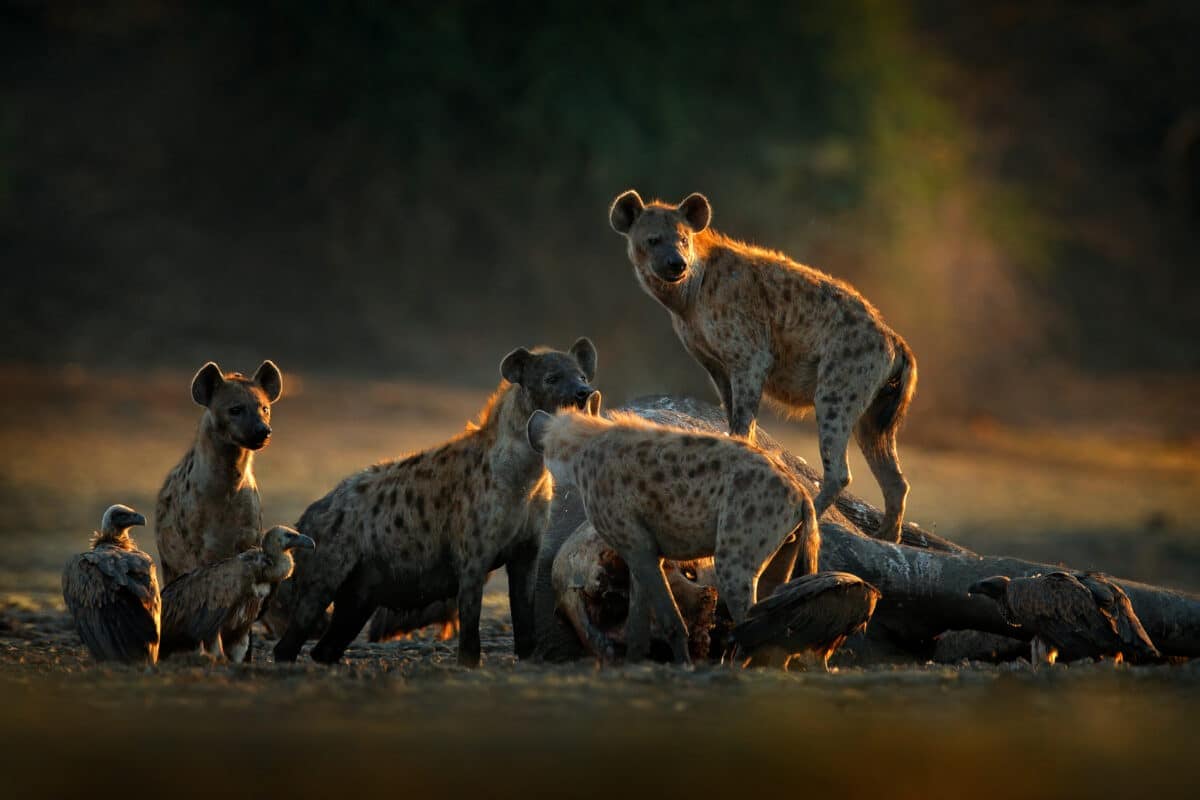
Hyenas are extremely resilient to disease and anthrax, which is often associated with the decaying flesh and bones they consume. This is thanks to an extremely acidic stomach environment that enables them to withstand these otherwise deadly pathogens.
2. Marabou Stork
Marabou Storks are native to Africa. They are known for their large size and unique appearance. These birds, part of the stork family Ciconiidae, can stand up to 1.5 meters tall and have a wingspan reaching an impressive 2.6 meters.
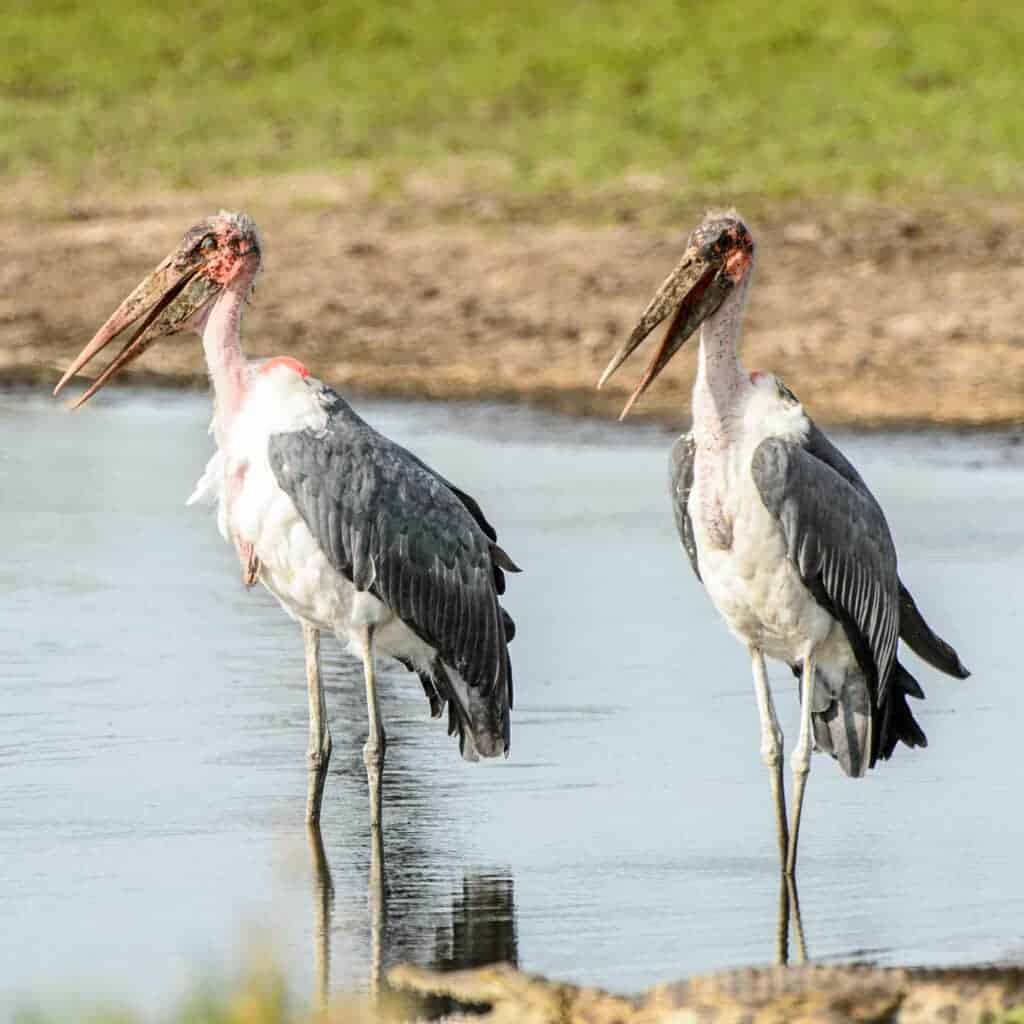
They have a bald head and neck, with a reddish pouch on the back of their neck. This baldness helps to keep them clean, serving hygiene purposes as they scavenge on decaying flesh. Giving them a unique appearance and perhaps the reason they made it into the Ugly Five.
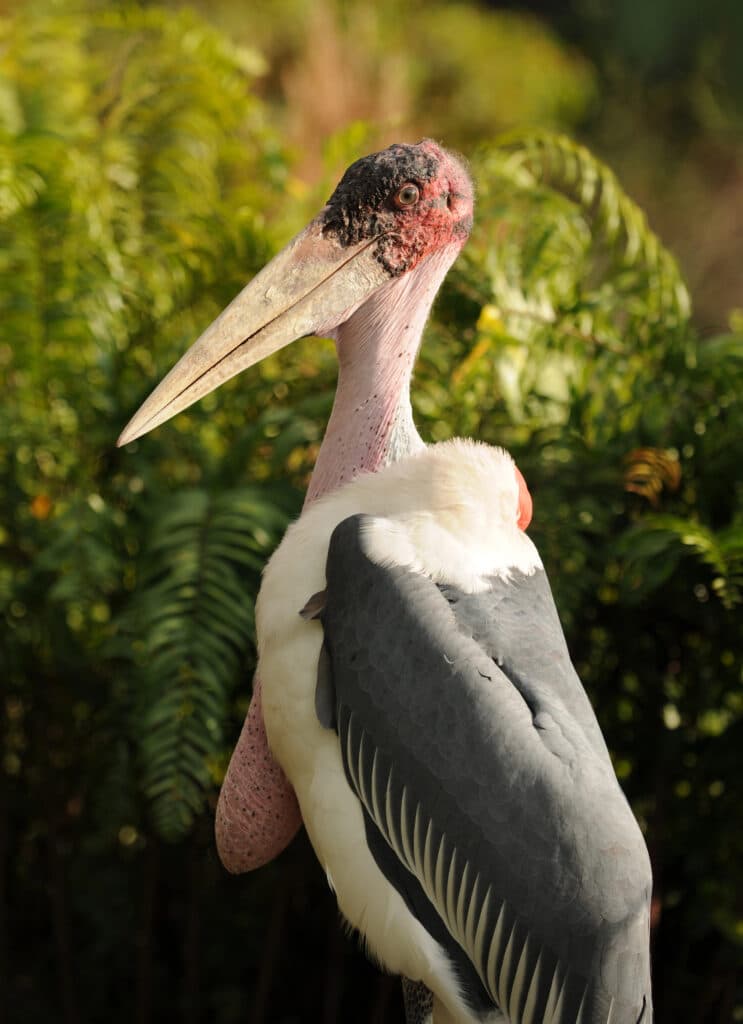
Marabou Storks are predominantly scavengers, feeding on carrion (decomposing flesh on dead animals), and can be seen alongside other scavengers at carcasses such as hyenas or vultures. They eat just about anything, including other small animals like fish, insects, human refuse, small birds, termites, and small mammals.
Marabou Storks’ role in their ecosystems includes cleaning up carcasses and decaying flesh. They produce guttural croaks and bill-clattering sounds, especially during the breeding season.
These birds often cohabit in large colonies and build nests on trees or cliffs. Despite their somewhat off-putting appearance, like all animals in the wild, they play an important role in maintaining the balance of the ecosystem.
An interesting fact about this bird is that it has hollow legs and feet to reduce its weight, assisting with its flying capabilities.
3. Vulture
There are 11 species of vultures found in Africa. Unfortunately, seven of these are on the endangered species list.
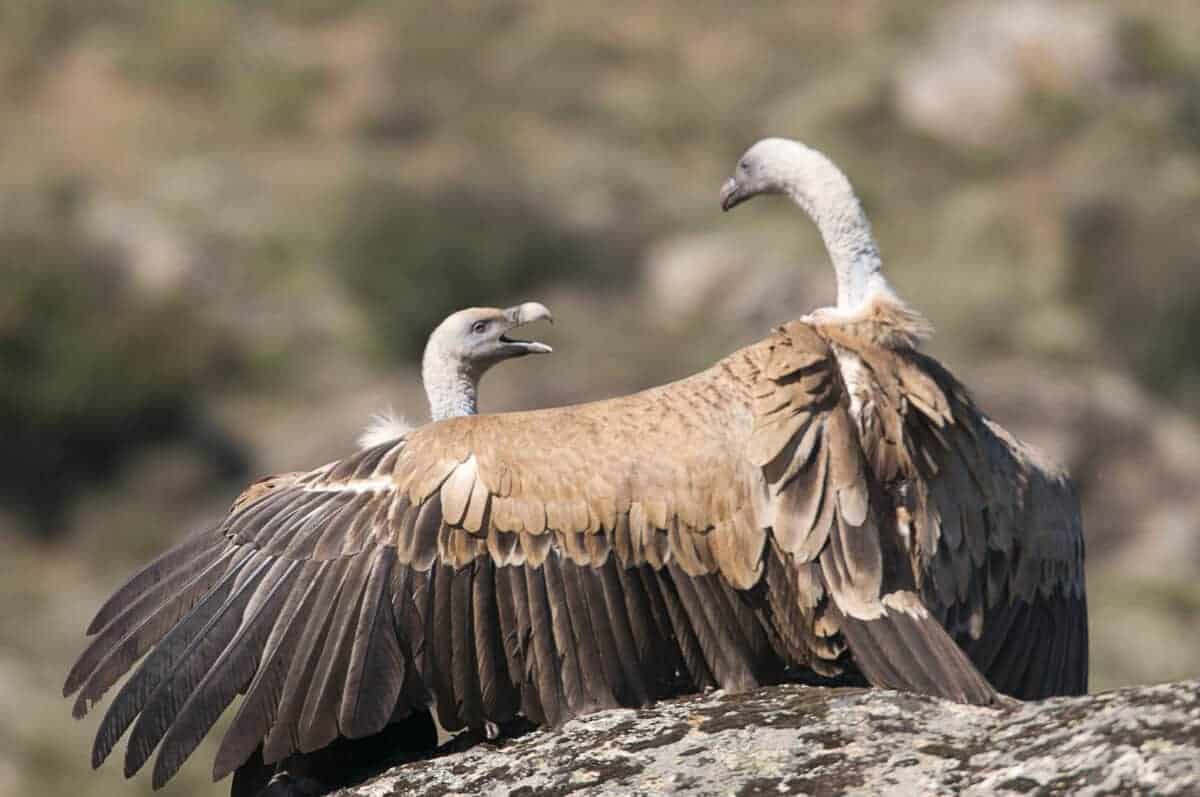
Vultures are the third scavenger on this list and are sometimes called nature’s clean-up crew. They, like the marabou stork, have a bald head and neck to keep up a high standard of hygiene after eating the leftovers of a decaying animal. This bald appearance has earned them their place in The Ugly Five.
Vultures can often be used on safari as an indicator of a kill as they can be seen circling the skies above a kill, awaiting their turn to feast. After they have gorged themselves on the carcass, usually amidst other scavengers, they can be seen sitting slumped near the carcass.
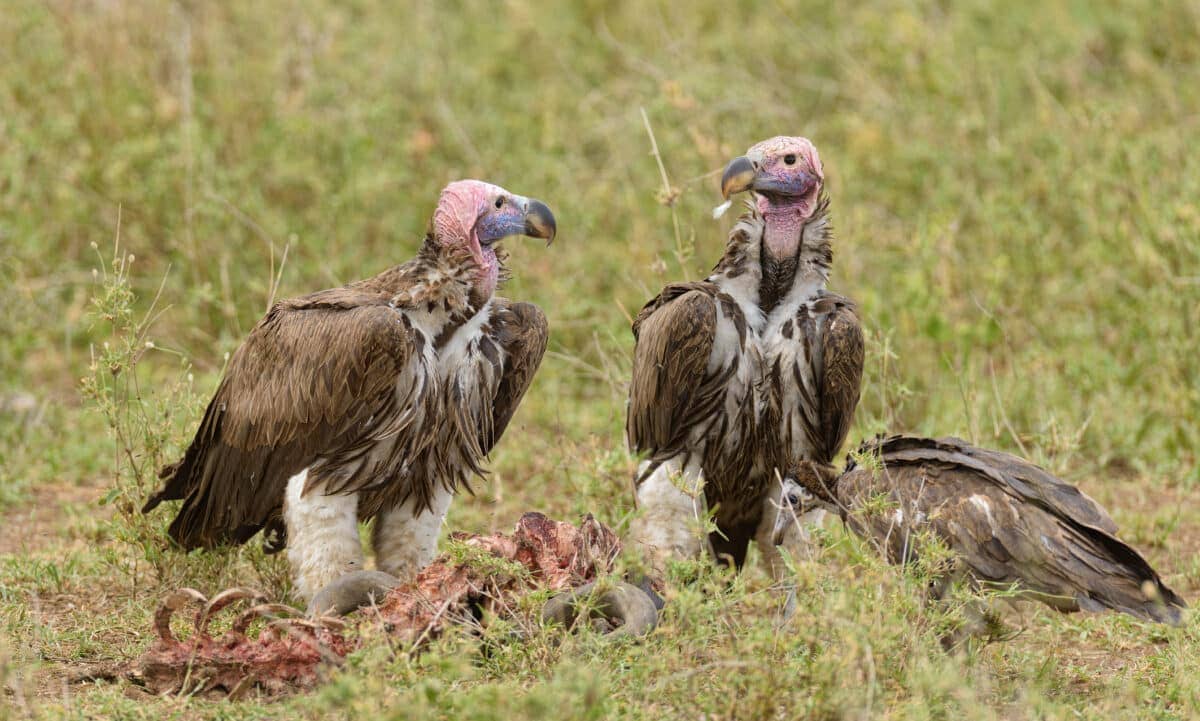
Unfortunately, African vultures face numerous threats, including poisoning, habitat loss, and collision with power lines. Their numbers have been declining rapidly, raising concerns among conservationists. Efforts to protect these birds are critical, not only for their survival but for maintaining the health and balance of African ecosystems.
4. Warthog
One of the most favored characters in The Lion King, Pumba the Warthog, has made it into The Ugly Five. Warthogs have a longer snout with tusks and oddly small eyes. Perhaps this earned them their place on this list.
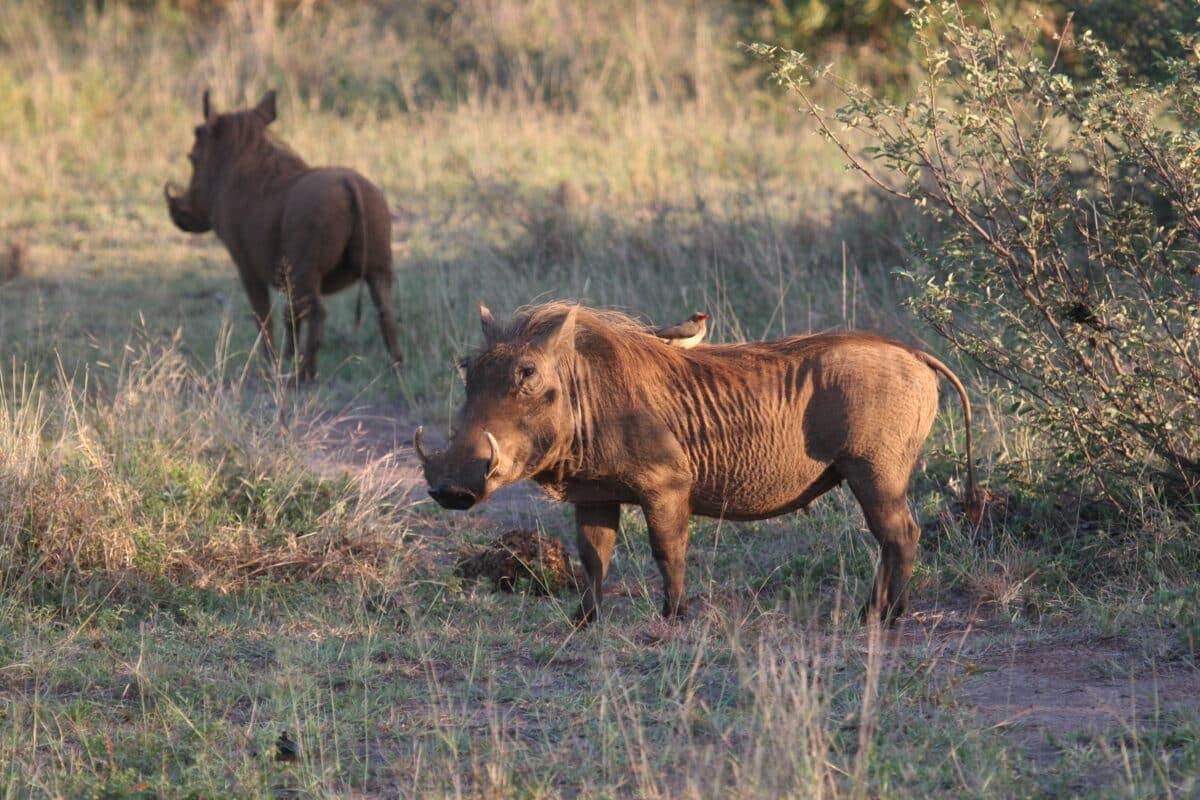
Warthogs are part of the pig family and are related to domestic pigs and boars. They usually live in families and are often found in these groups grazing, digging, or even wallowing in mud. They mainly feed on grasses, shrubs, roots and tubers, berries, some small insects, and even grub.
Warthogs are often seen kneeling with their front legs while grazing or digging for their food. They even have padding on their front knees to protect them! They are also known for their plump appearance and tufts of hair, almost resembling a mane. They also have a paintbrush-like tail.
5. Wildebeest
There are two types of wildebeest: black and blue. The blue wildebeest is more commonly seen in Africa. They are typically found in large herds and are always on the move to find sufficient grazing.
I’m personally uncertain as to how they made it onto this list, as I find them to be quite majestic-looking animals, but perhaps it’s their out-of-place mane on the underside of their neck.
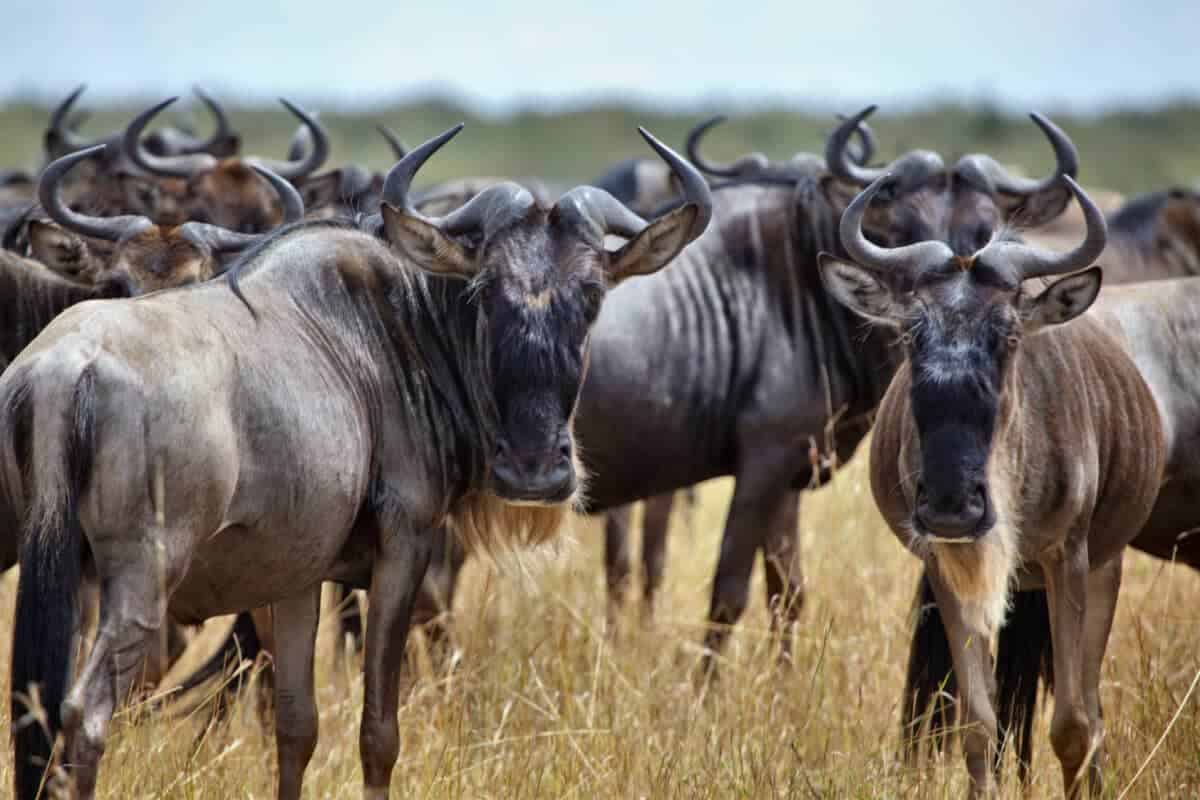
They have curved horns and are reasonably large, weighing up to 250kg.
Wildebeest are grazers and prefer to live in open grasslands, perhaps to be alert to predators. Males during the breeding season can become territorial to secure their own ‘sub herd’ of breeding females within the larger herd comprising of up to 150 females (out of the much larger herd). Males will rut and mark their territory to maintain their right as the breeding male for that group.
Wrapping it up
I hope you enjoyed reading and learning about Africa’s Ugly Five. While they are arguably not as majestic as The Big Five, they certainly have their place in the natural ecosystems of Africa. They can be just as exciting to spot if you are lucky enough to be on safari.
If you enjoyed reading this, you might also enjoy reading:
- Spotted Hyena vs. African Golden Cat
- Elephant Vs. Rhino: A Show-Down of the Colosses
- The Best Places to See the Big 5
Join our Forum for free today!


